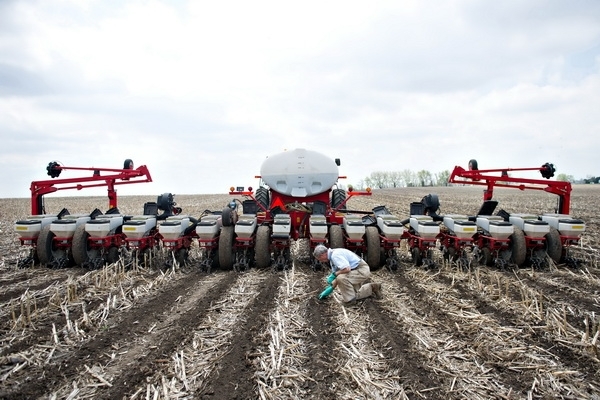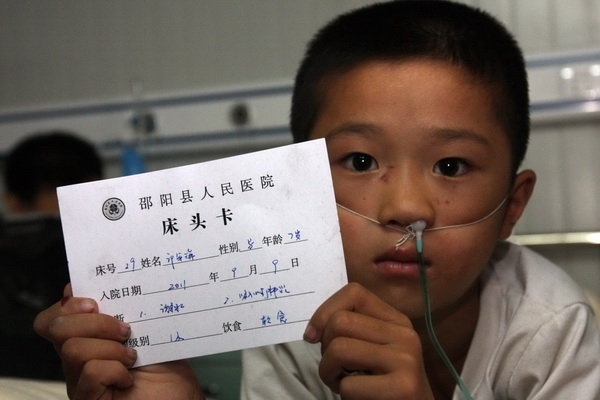

Highlights from this week's issue:

Developers Investing In Other Industries
News, Cover
~ China's property developers are stuck in a certain dilemma. "They are all not willing to invest more money in the real estate industry" said a real estate industry analyst. Instead, they are looking for other investment channels.
~ The developers have started to invest in other industries such as tourism, football clubs and mining.
~ Mining is particularly popular, with more than twenty developers channeling a total of 20 billion yuan into the industry over the last year.
~ There are some similarities between mining industry and property industry - both industries typically require upfront investments of several hundred millions yuan.
~ The other is that both industries have similar investment conditions. "Both industries need to deal with local governments with similar interpersonal contacts. So there is no need to develop a new circle of social relations, which is very important," said one Shaanxi mine owners
~ "The rules of the game have changed completely." Zhongkun Group Chairman Huang Nubo told the EO, explaining that the age of exorbitant profits in real estate industry has passed.
~ The housing market has started to weaken. In August, industry giant Wanke's total sales value decreased 13% compared with same period of last year. And they have reduced house prices by between 5,000 yuan and 10,000 yuan an apartment.
~ On the surface it seems that developers are responding to changes in government policy such as public housing, but the deeper explanation is that China's rapid urbanization process is coming to an end over the next couple of years. So property developers face fiercer competition.
Original article: [Chinese]

China Set to Tighten Foreign Investment Policy in Seed Industry
News, Page 3
~ It has been reported to EO exclusively that the Modern Crop Seeds Industry Development Plan (2011-2020) led by the Ministry of Agriculture will be issued within this year. The plan specifically provides that between 5 and 10 years time China will insist that foreign investors in China's seed industry must do so through joint ventures. Foreign investors can also only hold shares less than 50% of these companies' shares. The core department of joint ventures in the seeds industry, the "Research and Development Centre" (R&D Centre) must also be managed corporately by both parties within the joint venture. Therefore, the former situation in which foreign investors completely controlled the "R&D Centre" will not be possible.
~ Although there will be more restrictions, China still holds an optimistic attitude towards the Chinese seed industry and its ability to further incorporate foreign investment as well as advanced international technology.
~ Foreign enterprises first entered the seed industry in the 1980s. A total of 35 transnational enterprises are registered within the Chinese seed industry. Most are involved within vegetables and flowers, with only five running corn seed businesses and two running cotton seed businesses, according to Ma Shuping, Deputy Director of Planting Division of Ministry of Agriculture.
Original article: [Chinese]
State Cotton Purchases - Farmers Unwilling to Sell
News, page 4
~ The National Development and Reform Committee (NDRC) recently announced that they would purchase cotton from farmers at above market prices in order to replenish cotton reserves and stablilize the market for cotton.This is the first time that the Chinese central government has set a minimum purchasing price for cotton. However, 5 days after the new pricing system was announced, farmers are still refusing to sell their cotton to the NDRC.
~ After the market price for cotton dropped below 19,800 yuan per ton, the NDRC launch a program called the "temporary purchasing and stockpiling of cotton" on Sep 8. However, as of when we went to print on Sep 15, no farmers have been willing to sell their cotton.
~ A high-level executive at the trading company that is responsible for purchasing cotton on behalf of the NDRC, told the EO that there are two main reasons for the cool response of cotton farmers: firstly ,it's hard to meet the lowest purchasing amount of 90 tons before October when new cotton comes on to the market; secondly, given last year's high prices and the increased cost of growing cotton this year, farmers are still expecting a higher price .
~ Although no deals have yet been made, the introduction of the "reserve purchasing price" has impacted on the market price of cotton, which has stopped declining and stabilized, said Tu Tongkun from the Hubei Cotton Association. However, Lu Huaiyu expressed his concerns about the price gap for domestic and international cotton. If the NDRC is offering to buy cotton at a price that exceeds the market price, this maybe beneficial for cotton farmers, but could also have the effect of weakening the domestic textile industry by raising production costs.
Original article: [Chinese]

Boat Accident Reflects on Crisis in Rural Education
Nation, page 10
~ On Sep 9, 13-year-old Peng Hui was on the °∞school boat°± which was returning from a middle school located in a nearby town which was ferrying students back to their villages in Shaoyang when the boat sank. According to official data, 12 people died and 20 were injured. Most of the victims were primary or middle school students.
~ This tragic boat accident also reveals how the quality of education in China's rural areas has been hollowed out over the past decade.
~ Since reform of China's rural education were carried out in 2000, rural education in China is becoming urbanized. Many primary and middle schools in villages have merged to form one school located in the closest town. This move has been driven by the lack of local government funds and the shrinking number of prospective students.
~ For students in rural villages, the commute to school has become longer and harder. The students that took the "school boat" that sunk on Sep 9, were riding for free, a local middle school had arranged regular transportation for them as a way to attract more students to attend their school rather than some other school in another town.
~Eight out of the nine students who drowned were "stay-at-home" children whose parents had gone to the city to work.
~ The urbanization of rural education is hollowing out the rural schools while the quality of education offered in many city schools has also weakened by large class sizes, according to an expert from the Taoxingzhi Research Institute.
Original article: [Chinese]
Illegal Exploitation of Rare Earths in Guangdong
Nation, page 13
~ The illegal exploitation of rare earths in some places of Guangdong province has increased this year, encouraged by China's restrictions on rare earth mining volumes and reductions in export allowances.~ Luhe County (陆河县) is one such place. Illegal rare earth mines have spread almost across the county. According to Luhe county local government's data, illegal rare earth mines in the regions cover an area of 1000 mu.
~ In mid Aug, due to the heaving rain, the untreated polluted water from one of Luhe county's rare earth mine located in Shanghu Town flowed into Xialong River and Xinkeng reservoir. In this town, which has 67 hectares of illegal mines according to government estimates, fish and shrimp populations have been decimated. Some villagers joined up in an attempt to destroy the illegal rare earth mine.
~ Before doing so, they handed over a written report to Shanghu Town local government and said that if the local government was not going to take any action about it, they would go to destroy the illegal rare earth mine themselves.
~ Luhe County and Shanghu Town sided with the public and removed the illegal mine of Aug 15. The law enforcement team that went to destroy the mine was joined by up to one thousand villagers.
~ "But it is hard to be optimistic for the following situation." Ye Jinsheng a villager said. Previously, the local government has taken many similar actions, but these illegal mines reappeared soon. "The main problem is the leaders and cadres at all levels have interests at many mine sites. They are actually protecting the illegal behavior of rare earth mines."
~ Chen Jianming, an official from Shanwei Municipal Bureau of Land and Resources said that in recent years local governments have colluded with mine owners, with officials directly taking share in the mines or becoming bosses behind the scenes.
~ In Guangdong province the approved annual mining volume is 2,000 tons per year, but the actual volume is closer to 40,000 tons per year.
Original article: [Chinese]
Beijing's Green but Poor Satellite Villages
Nation, page 14
~ Chongli, a poor county close to the city of Zhangjiakou in northern Hebei, is only a two and a half hour drive northwest of Beijing. However, apart from being an "ecological preservation zone" and a "green ecological barrier" of Beijing, Chongli is also designated as a poor county according to the national standard. According to data from Hebei province, Chongli is just one of 25 counties surrounding Beijing that are considered impoverished. Yet, aiming to establish itself as an ecological county, Chongli has actually sacrificed much of its own development to improve the environment in Beijing.
~ In 2003, policies that forbid pasturing were introduced in Chongli in order to promote revegetation. The ban leaves the already impoverished farmers in a more difficult situation. "It is unfair to farmers to forbid pasturing," says Qiao Zhanhai a local agricultural official told the EO.
~ Compensation for the first five years has ended, but a replacement pasture has not yet been established. Meanwhile, due to the ecological policy, many industries cannot be established in Chongli.
~ The limited fresh water supply is also strictly rationed in order to guarantee afforestation. Afforestation and revegetation are both methods of preventing desertification, therefore creating a buffer for Beijing that minimizes the amount of dust storms that blow into the capital every year, but the environmental policies also restrict economic development in the surrounding counties.
~ "We've sacrificed so much for Beijing, when will Beijing do something in return?" said one official in Chongli bitterly. Although the development strategy "Green Economic Circle Around Beijing" (环首都绿色经济圈) was promoted by Hebei province last year, no subsequent policies have been applied in the counties. An official from Chongli expressed concern stating that the small county is not necessarily requesting funds, but at least some policies for investment in return.
Original article: [Chinese]
China's Economic Problems
Market, page 18
~ Fitch warned on Sept 8 that it may lower China's sovereign credit rating if the asset quality of its banks deteriorates substantially.
~ The credit rating agency is "worried about local government debts' impact on domestic banks' asset quality."
~ Fitch's reasoning is that Chinese loans are increasing too fast, with property values rising dramatically, and recent inflationary pressure increasing the risk of macro-financial instability.
~ Well-known economist Mao Yushi (茅于轼) said, that healthy economic growth depends on five indicators, equality, environmental protection, inflation, asset bubbles and employment and that China has existing problems in all these five areas.
~ "If we included these five indicators into our GDP calculation, then our GDP could be zero." according to Mao.
~ "Although there are lots of challenges, overall we are still positive about China's economy," said Ben Shenglin (贲圣林), President of JPMorgan Chase Bank (China) Co., Ltd.
Original article: [Chinese]

Fu Chengyu's Plan to Reform Sinopec: Cutting Staff
Corporation, page 25
~ Five months after being assigned as the new CEO of Sinopec, Fu Chengyu (∏µ≥…”Ò), the former CEO of CNOOC (China National Offshore Oil Corporation), is beginning to shake things up at the company. In an exclusive, the EO has learned that Fu plans to gradually lay off a large number of Sinopec employees in order to promote efficiency. Fu also wants to strengthen the market operation of the company and will encourage high-quality subsidaries to list independently.
~ Over the coming 10 to 15 years, Fu plans to halve the number of employees working at ZRCC, Sinopec's largest refinery, to about 3,000 from the current 6,000.
~ The company will also try to increase efficiency by altering hiring practices so that they hire more people from within the company, thus reducing the number of new staff they employ.
~ Meanwhile Sinopec will pay more attention to the capital market and also change the way it fills senior management positions. Unlike in the past, when direct appoitments were made internally, the system will be opened up and become more competitive.
~ It's unlikely that all of Fu's grand plans can be completed during his term in office, according to experts in the petroleum industry. Fu is said to be creating a new path that his successors can follow.
~ One of the big challenges facing Fu Chengyu is that Sinopec is highly dependent on ohers for its supply oft crude oil. Whereas, PetroChina produce 2.6 times more crude and five times more natural gas than Sinopec.
Original article: [Chinese]

